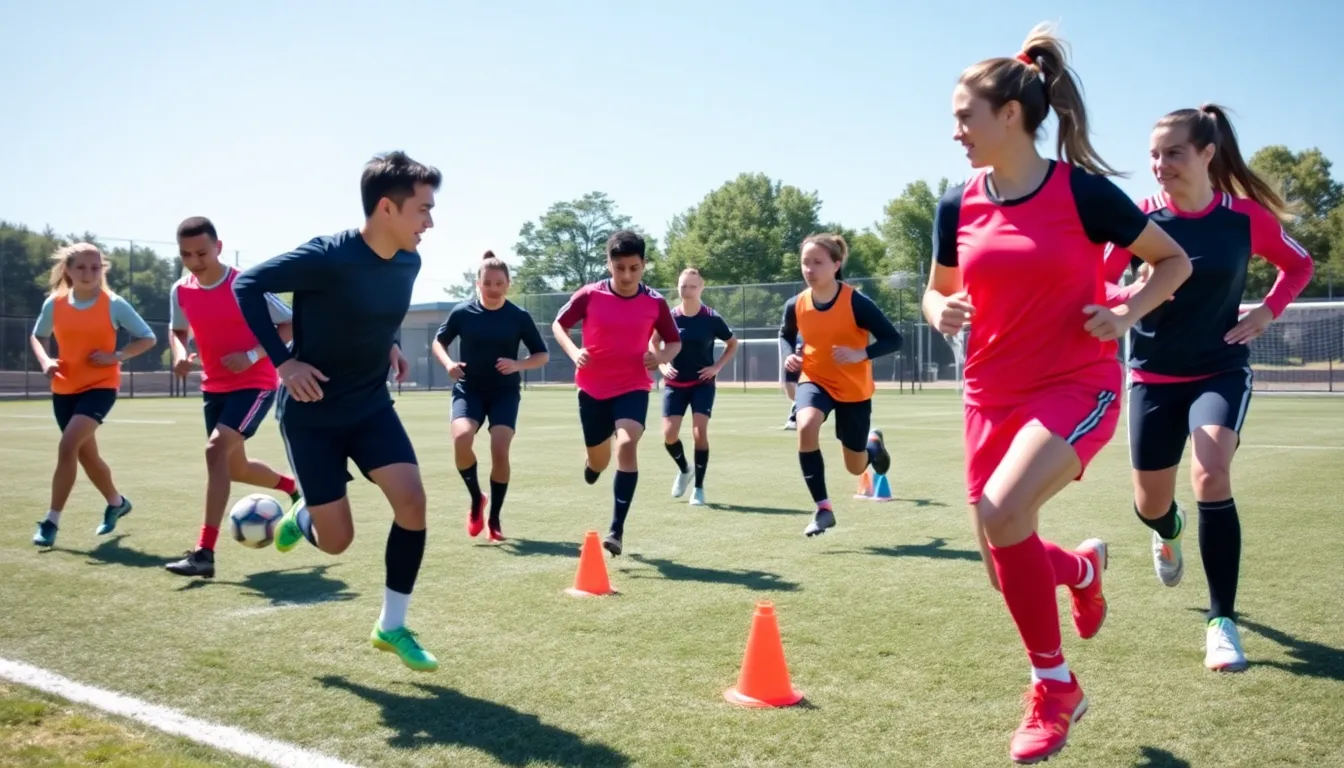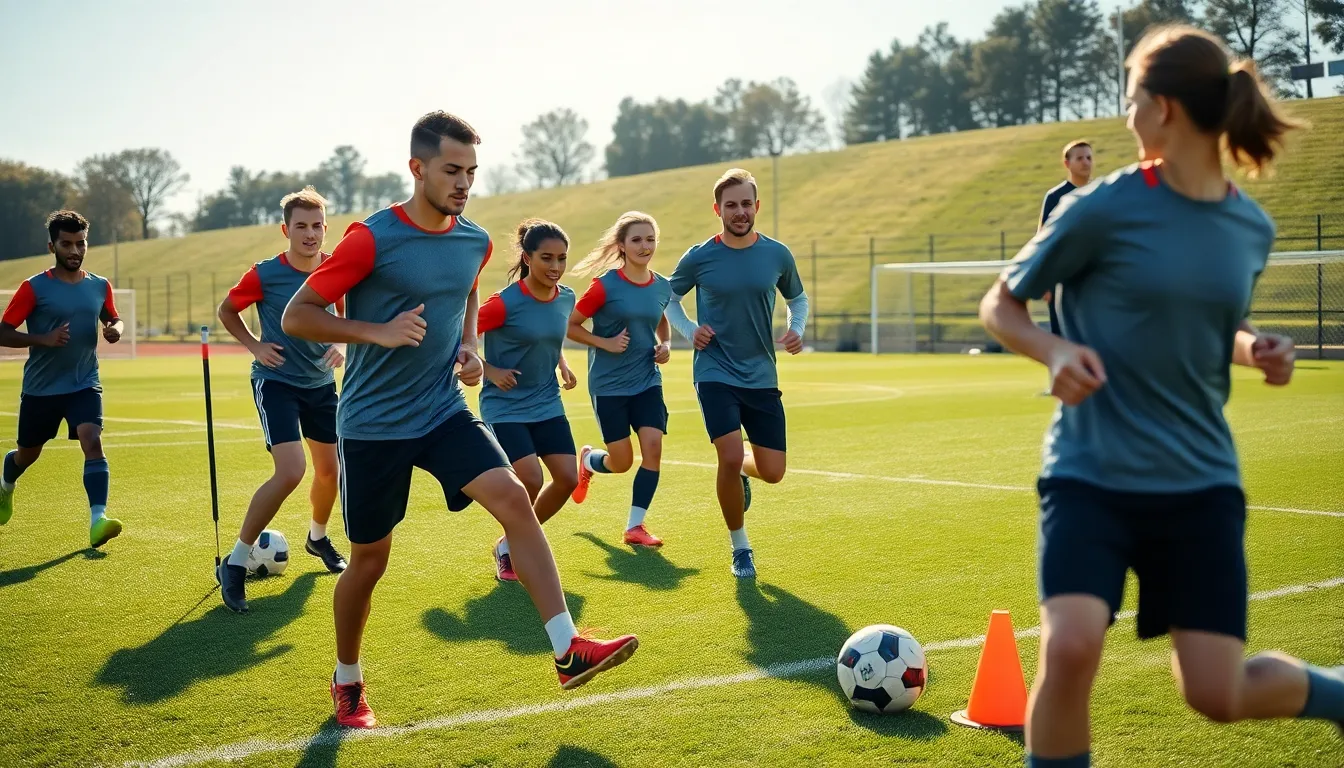Soccer isn’t just a game of skill: it’s a battle of stamina, agility, and endurance. Ever watched a player sprint across the field, seemingly defying physics? That’s no accident: it’s the result of rigorous soccer fitness training. In this text, we’ll explore why fitness is the backbone of soccer success, how to enhance performance, and even how to craft a specialized training plan. Get ready to kick your fitness game up a notch.
Table of Contents
ToggleImportance Of Fitness Training In Soccer

In soccer, fitness training is paramount to peak performance. Without sufficient fitness levels, even the most technically skilled players can falter. This sport demands explosive speed, rapid changes in direction, and sustained endurance throughout the match. Fatigue can lead to missed goals, slower reactions, and eventually, defeat. Hence, incorporating fitness training into a player’s regimen is not just beneficial, it’s essential.
The physical requirements of soccer are multifaceted, making it vital for players to enhance their stamina, agility, and strength. Also, a well-structured fitness routine can help minimize the risk of injuries, keeping players on the field where they belong. So, while talent and skill are critical in the beautiful game, robust fitness training serves as the bedrock of athletic success.
Key Components Of Soccer Fitness
When discussing soccer fitness, several key components come into play. These include:
- Endurance: Soccer players run an average of 7 to 9 miles per match. Building aerobic endurance allows them to maintain high levels of performance from whistle to whistle.
- Speed: Quick sprints can be game-changers. Players need to develop explosive speed to break through defenses.
- Agility: The ability to change direction swiftly and efficiently can give players the edge over their opponents. Training for agility includes drills that enhance coordination and balance.
- Strength: A strong core and powerful legs are crucial for kicking accuracy, sprinting, and tackling. Strength training goes beyond weightlifting: it involves bodyweight exercises and specific soccer drills.
- Flexibility: Maintaining flexibility helps in preventing injuries and improving overall performance. Stretching and mobility exercises should not be overlooked.
Each of these components plays a significant role in how effectively a player can perform, making soccer fitness training a comprehensive and well-rounded approach.
Types Of Soccer Fitness Training
There are several types of fitness training that soccer players can incorporate into their routines:
- Aerobic Training: Long-distance running and cycling help build the foundational endurance necessary for match days.
- Interval Training: Quick bursts of activity followed by rest periods mimic the stops and starts of soccer games, enhancing both aerobic and anaerobic capacities.
- Circuit Training: Combining strength and conditioning, circuit training incorporates exercises like squats, lunges, and push-ups, allowing players to build strength while keeping their heart rates high.
- Agility Drills: Exercises like cone dribbles, ladder drills, and agility hurdles can improve footwork and quickness.
- Plyometric Training: Jumping exercises develop explosive power and speed crucial for soccer players tackling opponents or leaping for a header.
- Skill-Specific Drills: Incorporating technical skills like dribbling and passing into fitness training ensures players hone their skills while training their bodies.
Creating A Soccer Fitness Training Plan
Designing a personalized soccer fitness training plan requires careful consideration of a player’s current fitness level, goals, and schedule. Here’s a suggested structure:
- Assess Current Fitness Levels: Before starting any plan, it’s crucial to understand where the player currently stands in terms of fitness and skills.
- Set Specific Goals: Whether it’s losing weight, improving speed, or increasing endurance, having concrete goals makes it easier to tailor a training plan.
- Include All Components: Ensure the training plan incorporates endurance, speed, strength, agility, and flexibility exercises. A balanced approach is more effective than focusing solely on one area.
- Schedule Sessions: Depending on a player’s availability, create a weekly or monthly schedule. Consistency is critical: hence, plan to train multiple times each week, mixing different training types.
- Monitor Progress: Just like in any training regimen, tracking progress keeps the player motivated and provides an opportunity to adjust the plan if necessary.
- Rest and Recovery: Incorporating rest days prevents burnout and allows the body to recover, making the training even more effective.
This structured plan allows players to work towards their goals while ensuring they maintain proper fitness levels.
Tips For Effective Soccer Fitness Training
To maximize the effectiveness of soccer fitness training, players can keep these tips in mind:
- Stay Hydrated: Water is crucial for optimal performance and recovery. Keeping hydrated helps maintain energy levels and prevents fatigue.
- Nutrition Matters: A balanced diet supports training efforts. Incorporate lean proteins, healthy fats, and plenty of fruits and vegetables to fuel the body.
- Listen to the Body: Pay attention to any signs of fatigue or discomfort. Rest when needed to prevent injuries.
- Mix It Up: Variety not only keeps the training enjoyable but also helps develop a broader range of skills and fitness levels.
- Set Realistic Expectations: Progress takes time, and maintaining a positive attitude can keep motivation high.
- Involve Others: Training with teammates can boost morale and create a competitive environment that pushes everyone to elevate their game.





